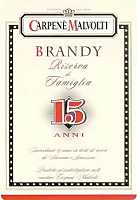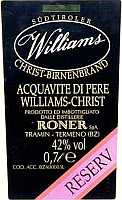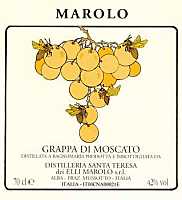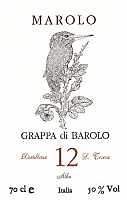
Wine Culture and Information since 2002 - Volume 22
 Wine Culture and Information since 2002 - Volume 22 |
|
PumpkinFamous for Halloween, very versatile in cooking, cosmetics and medicine, pumpkin is also used as a container and tool. No other vegetable probably owns all of these characteristics |
|
Pumpkin, that is Cucurbita pepo L., belongs to the Cucurbitaceae family, genre Cucurbita. Pumpkin is a herbaceous annual plant, with a climbing trunk or creeping on the ground, in some varieties can reach the length of some meters, whereas in others gets a bushy aspect, it is covered by hard fluff and sometimes having thorns as well. Leaves have an oval-stretched shape with a heart-shaped base. Flowers have pentagonal shaped peduncles. Male flowers are grouped in bunches at the base of leaves and have a calyx made of five wiry parts, whereas female flowers are solitary. The flowers have a bell shaped golden yellow corolla. Fruits are very variable in shape and in size according to variety, from large spherical to stretched pear shape, with a smooth or wrinkled surface. In the pulp are contained many flat oval seeds.
The most known varieties of pumpkins are Cucurbita maxima (sweet pumpkin) and Cucurbita moschata. Cucurbita maxima has a fruit - that is the part commonly known with the name of pumpkin - of pretty big size, it can also weigh 80 kilograms (176 pounds). To this species belongs the big wintertime pumpkins, with a turban shaped aspect, as well as the big oval shaped pumpkins, with a yellow-orange pulp, pretty floury and with a basically sweet taste. The skin of ripe pumpkin shows a green-gray or yellow color as well as orange-red. Pumpkins belonging to the Cucurbita moschata genre are hollow, of average size and dark green or yellow-orange color, have a sweet and soft pulp. Finally, Cucurbita Pepo is the family to which belong the so called zucchini. As pumpkins are not used in kitchen or for nutritional purposes only, it should be remembered some types are generally used for cosmetics or for the making of containers and tools. Wherever in the world men have learnt to make containers from pumpkins. For example, in Africa with hollow pumpkins men are used to make water operated pipes, where the smoke produced by the small burner is sent through a wood cylinder in the water contained in the pumpkin and in the upper part there is a hole from which filtered smoke is being inspired. Some varieties of pumpkins belonging to the Cucurbita Lagenaria genre, when they reach full ripeness, have a very hard skin, and once were cultivated in many countries in order to make containers, flasks for wine or water, and even funnels. For this reason Lagenaria pumpkin is also called “Wine Pumpkin”, as after having been dried, the inside shows a cavity which can be used for keeping or transporting wine, water and other liquids. Some small sized pumpkins are used - after having been dried and divided into two halves - as spoons or ladles. Pumpkin is sown in springtime and get full ripeness in August. For nutritional purposes are being used three species only: Cucurbita Maxima, Cucurbita Moschata and Cucurbita Pepo. Pumpkin requires a tempered climate, with a temperature ranging from 18°C (64°F) to 24°C (75°F). The best temperature for vegetation ranges from 10°C (50°F) to 25°C (77°F); in case it is sown at a temperature lower than 10°C (5'°F), germination is delayed until temperature does not reach an acceptable level. As for soil, pumpkin is not very demanding, it adapts itself to every type, however to get the best results it is appropriate to remember it prefers a fresh and soft soil, of average composition, rich in organic substances, with no stagnation of water and slightly acid. In case it is wished to obtain large fruits, it will enough to keep plants apart - six or seven meters one from each other should be enough (19-22 feet) - and in the middle of the season it will be left just one fruit to the plant. The soil must be well manured since the beginning of the cultivation in order to avoid an excessive use of fertilizers which would favor the formation and development of leaves instead of fruits. It will be enough to water the plants once a week while remembering to put a wood support under the pumpkin in order to avoid the fruit to get rotten. It is highly probable pumpkin is from Central America, in fact the first pumpkin seeds were found in Mexico and are dated back to the period from 6,000 to 7,000 b.C. In North America yellow pumpkin was one of the main foods of indigenous people: the first settlers learnt from them to cultivate and use pumpkin. Pumpkin - together with potatoes and tomatoes - has been among the first vegetables imported in Europe after the discovery of America.
|
||||||||||||
|
Before purchasing a pumpkin it should be paid attention to some factors in order to choose a high quality product. First of all, pumpkin must be fresh and ripe: when slightly struck with knuckles, pumpkin must emit a hollow sound. Check the peduncle: it must be soft and well anchored to the pumpkin, the skin must not have any bruise. Because of its size, pumpkin is frequently bought is cut parts instead of the whole fruit. In this case it is good to check the cut part is not dry, the pulp must be hard and with a ripe aspect and that seeds are still slippy and wet. Cucurbita maxima is probably the most used variety in kitchen as it is suited for the preparation of many dishes. The other “long” varieties are best suited for the preparation of soups together with other vegetables. Pieces of pumpkin can be kept in the refrigerator - in the vegetable section - preferably wrapped in a film and consumed within few days as they tend to easily dehydrate. In case pumpkins are bought as a whole, it is good to remember they can be kept all wintertime long in a dark, fresh and dry place. In case it is needed a longer keeping, it is enough to cut the pulp in small cubes, to boil them for some minutes in hot water, and therefore they can be be frozen.
|
|
The pulp of pumpkin contains many active principles and in particular carotenoids, mucilages and pectic substances. The seeds mainly contain phytosterols, fat oils and phytochelatin. The pulp and juice have laxative and diuretic effects, whereas, for external use, it can be used as a cosmetic treatment for the skin, a traditional remedy to soften and revitalize skin. From fresh and crushed seeds can be extracted an oil with a dark color and a pungent smell; toasted and salted are an excellent snack. The main medical property of seeds is a vermifuge action, in particular against tapeworm. This property derives from an aminoacid - cucurbitine - which paralyzes the tapeworm and causes its detachment from the bowel. The use of seeds as a vermifuge is well tolerated and has no contraindications, even tough its efficiency cannot be compared to male fern, however - as opposed to it - has the advantage of having no side effects and to allow the repetition of the treatment in case it did not work properly. As a laxative, it can be used pumpkin juice to be drunk in the morning on an empty stomach. It should be remembered, despite these remedies can be considered harmless, it is always best to ask a doctor or a specialist. The pulp of pumpkin has few calories: 100 grams of pumpkin pulp contain just 15 calories. Just like carrots and other yellow-orange colored vegetables, pumpkin contains high quantities of vitamin A and betacarotene, it is also rich in vitamin C, potassium and mineral salts. According to some researches, pumpkin - by keeping a correct water balance in the organism - is useful for the prevention of cancer. The pulp can be used in many ways, besides cooking, for example as a remedy for skin inflammations. Seeds, besides being useful against tapeworm, have qualities for the prevention of urinary tract disturbs. From the pulp can be obtained an extract which can be added to milk or to fruit juice, and can be used as a remedy for gastric disturbs and for prostate. With pumpkin pulp can be prepared a face-pack. For its preparation is enough to have a slice of raw pumpkin, a handful of seeds and some honey, mix all ingredients and spread on the face allowing it to work for some minutes: the skin will benefit from this treatment.
|
AquavitaeReview of Grappa, Distillates and Brandy |
|
|
| Distillates are rated according to DiWineTaste's evaluation method. Please see score legend in the "Wines of the Month" section. |

|
|
Brandy Riserva di Famiglia 15 Anni |
|
| Carpenè Malvolti (Veneto, Italy) | |
| Raw matter: Selection of Wines | |
| Price: € 17.00 - 70cl | Score: |
| This brandy shows an intense amber yellow color, limpid and crystalline. The nose denotes intense, clean, pleasing and refined aromas of vanilla, toasted, cocoa, hazelnut, honey, licorice, grape flowers, with almost imperceptible alcohol pungency. In the mouth has intense flavors, good roundness, perceptible alcohol pungency which tends to dissolve rapidly, good correspondence to the nose, agreeable. The finish is persistent with flavors of hazelnut, honey and licorice. This brandy ages for at least 15 years in small slavonian and limousine oak barrels. Alcohol 40%. | |

|
|
Acquavite di Pere Williams Christ Reserv Extra |
|
| Roner (Alto Adige, Italy) | |
| Raw matter: Williams Christ Pears | |
| Price: € 13.40 - 70cl | Score: |
| This fruit brandy is colorless, limpid and crystalline. The nose denotes intense, clean, pleasing and refined aromas of pear, acacia and anise, with almost imperceptible alcohol pungency. In the mouth has intense flavors, very pleasing, good roundness, perceptible alcohol pungency which tends to dissolve rapidly, excellent correspondence to the nose, very agreeable and balanced sweet hints. The finish is very persistent with long flavors of pear. A well made fruit brandy produced with double distillation in bainmarie alembic still. Alcohol 42%. | |

|
|
Grappa di Moscato 2004 |
|
| Santa Teresa Marolo (Piedmont, Italy) | |
| Raw matter: Pomace of Muscat Blanc | |
| Price: € 25.00 - 70cl | Score: |
| This grappa is colorless, limpid and crystalline. The nose reveals intense, clean, pleasing and refined aromas of grape, peach, praline, banana and sage, with almost imperceptible alcohol pungency. In the mouth has intense flavors, agreeable, good roundness, perceptible alcohol pungency which tends to dissolve rapidly, good correspondence to the nose, balanced sweet hint. The finish is persistent with flavors of grape and peach. A well made grappa distilled in bainmarie discontinuous alembic still. Alcohol 42%. | |

|
|
Grappa di Barolo 12 anni 1993 |
|
| Santa Teresa Marolo (Piedmont, Italy) | |
| Raw matter: Pomace of Nebbiolo from Barolo | |
| Price: € 43.00 - 70cl | Score: |
| This grappa shows an intense amber yellow color, limpid and crystalline. The nose reveals intense, clean, pleasing, refined and elegant aromas of prune, cherries macerated in alcohol, vanilla, licorice, honey, cocoa, tobacco, dried violet, mace and almond, with almost imperceptible alcohol pungency. In the mouth has intense flavors, good roundness, perceptible alcohol pungency which tends to dissolve rapidly, excellent correspondence to the nose, very agreeable. The finish is very persistent with long flavors of prune, licorice, honey and cocoa. A well made grappa distilled in bainmarie discontinuous alembic still. It ages for 12 years in small oak and acacia barrels. Alcohol 50%. | |
Wine Parade |
|
|
| The best 15 wines according to DiWineTaste's readers. To express your best three wines send us an E-mail or fill in the form available at our WEB site. |
| Rank | Wine, Producer | |
|---|---|---|
| 1 |
| Palazzo della Torre 2000, Allegrini (Italy) |
| 2 |
| Aglianico del Vulture La Firma 2002, Cantine del Notaio (Italy) |
| 3 |
| Amarone della Valpolicella Classico 1998, Santa Sofia (Italy) |
| 4 |
| Montepulciano d'Abruzzo Riparosso 2001, Illuminati (Italy) |
| 5 |
| Trento Talento Brut Riserva Methius 1998, Dorigati (Italy) |
| 6 |
| Colli Orientali del Friuli Rosazzo Bianco Terre Alte 2002, Livio Felluga (Italy) |
| 7 |
| Chablis Grand Cru Les Clos 2002, Domaine Billaud-Simon (France) |
| 8 |
| Riesling Cuvée Frédéric Emile 1999, Maison Trimbach (France) |
| 9 |
| Riesling Central Otago 2004, Felton Road (New Zealand) |
| 10 |
| Brunello di Montalcino 1999, Castello Banfi (Italy) |
| 11 |
| Harmonium 2001, Firriato (Italy) |
| 12 |
| Amarone della Valpolicella Classico 2000, Zenato (Italy) |
| 13 |
| Edizione Cinque Autoctoni 2001, Farnese (Italy) |
| 14 |
| Wine Obsession 2001, Vignamaggio (Italy) |
| 15 |
| Rêve 2001, Velenosi Ercole (Italy) |
|
||||||||
|
DiWineTaste Polls
|
| |||||||
Privacy Policy | |||||||


| Copyright © 2002-2024 Antonello Biancalana, DiWineTaste - All rights reserved |
| All rights reserved under international copyright conventions. No part of this publication and of this WEB site may be
reproduced or utilized in any form or by any means, electronic or mechanical, without permission in writing from DiWineTaste. |